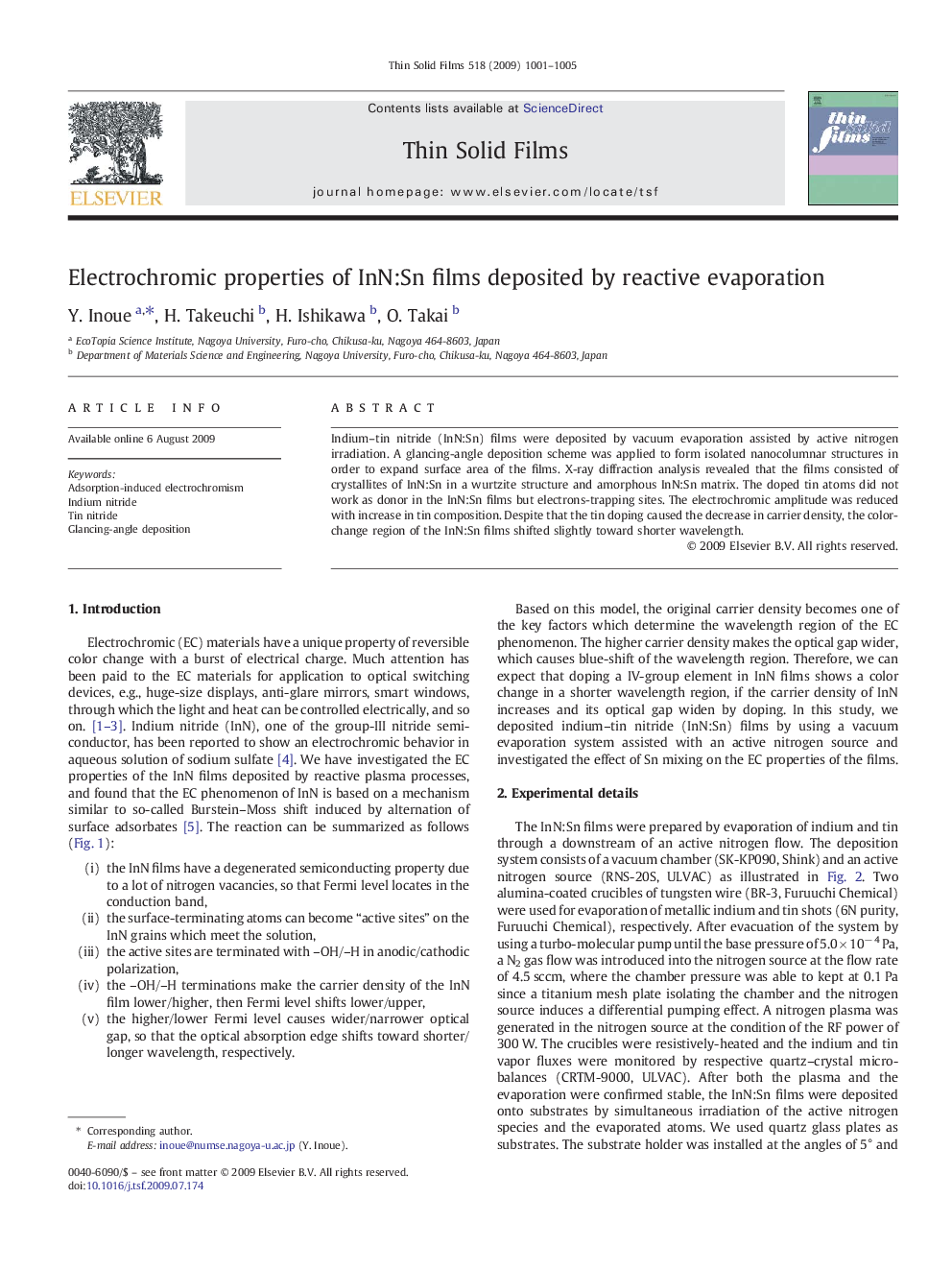| Article ID | Journal | Published Year | Pages | File Type |
|---|---|---|---|---|
| 1671034 | Thin Solid Films | 2009 | 5 Pages |
Abstract
Indium–tin nitride (InN:Sn) films were deposited by vacuum evaporation assisted by active nitrogen irradiation. A glancing-angle deposition scheme was applied to form isolated nanocolumnar structures in order to expand surface area of the films. X-ray diffraction analysis revealed that the films consisted of crystallites of InN:Sn in a wurtzite structure and amorphous InN:Sn matrix. The doped tin atoms did not work as donor in the InN:Sn films but electrons-trapping sites. The electrochromic amplitude was reduced with increase in tin composition. Despite that the tin doping caused the decrease in carrier density, the color-change region of the InN:Sn films shifted slightly toward shorter wavelength.
Related Topics
Physical Sciences and Engineering
Materials Science
Nanotechnology
Authors
Y. Inoue, H. Takeuchi, H. Ishikawa, O. Takai,
